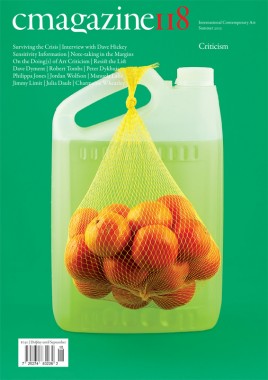
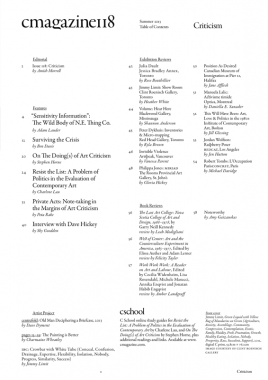
C Magazine 118, Criticism
Softcover, 60 pp., offset 4/1, 210 x 295 mm
Edition of 2200
ISSN 1480-5472
Published by C Magazine
$7.50 ·
Issue 118 includes feature essays by Adam Lauder on “Sensitivity Information”, Charlene Lau on “Problems in the Evaluation of Contemporary Art”, Stephen Horne on the “Doing(s) of Art Criticism”, Ben Davis on “Surviving the Crisis”, and Peta Rake on “Private Acts: Note taking in the Margins of Art Criticism”, as well as Sky Goodden in conversation with Dave Hickey.
Artist Projects include Dave Dyment’s Old Man Deciphering a Briefcase, and Charmaine Wheatley’s The Painting is Better.
Also, in this issue, reviews from across Canada and around the globe: Rose Bouthillier on Julia Dault, Jessica Bradley Annex, Toronto; Heather White on Jimmy Limit: Show Room, Clint Roenisch Gallery, Toronto; Shannon Anderson on Volume: Hear Here, Blackwood Gallery, Mississauga; Kyla Brown on Peter Dykhuis: Inventories & Micro-mapping, Red Head Gallery, Toronto; Vanessa Parent: Invisible Violence, Artspeak, Vancouver; Gloria Hickey on Philippa Jones: MIRIAD, The Rooms Provincial Art Gallery, St. John’s; Jane Affleck on Position As Desired, Canadian Museum of Immigration at Pier 21, Halifax; Daniella E. Sanader on Manuela Lalic: Activisme timide, Optica, Montreal; Jill Gleesing This Will Have Been: Art, Love & Politics in the 1980’s, Institute of Contemporary Art, Boston; Jen Hutton on Jordan Wolfson: Raspberry Poser, REDCAT, Los Angeles; and Michael Davidge on Robert Tombs: L’Occupation, ParisCONCRET, Paris.
C118 also includes book reviews of The Last Art College: Nova Scotia College of Art and Design, 1968-1978, review by Leah Modigliani; West of Center: Art and the Counterculture Experiment in America, 1965-1977, review by Felicity Tayler; and Work Work Work: A Reader on Art and Labour, review by Amber Landgraff.
Adam Lauder, Amber Landgraff, Art, Artspeak, Ben Davis, C Magazine, Charlene Lau, Clint Roenisch Gallery, Culture, Daniella E. Sanader, Dave Dyment, Dave Hickey, Distribution, Felicity Tayler, Gloria Hickey, Heather White, Jane Affleck, Jen Hutton, Jill Gleesing, Jordan Wolfson, Julia Dault, Kyla Brown, Leah Modigliani, Manuela Lalic, Michael Davidge, Peta Rake, Peter Dykhuis, Philippa Jones, Robert Tombs, Rose Bouthillier, Shannon Anderson, Sky Goodden, Vanessa Parent

The Masses, The Electric Information Age Album
12-inch vinyl record, sleeve silkscreened/letterpress 2/1, 12.25 x 12.25 inches
Inventory Records 01 [IR01-A]
Edition of 400
Published by Inventory Books
$20.00 ·
Created as an audio extension to “The Electric Information Age Book” by Jeffrey T. Schnapp and Adam Michaels, the LP was made in the spirit of the experimental 1967 “The Medium is the Massage LP”, the “first spoken arts record you can dance too” based on media theorist Marshall McLuhan’s groundbreaking book of the same name.
Produced by Schnapp, Michaels, and Daniel Perlin in a process paralleling the books production, the album incorporates new music drawing upon a wide range of genres (such as Post-Punk, Mutant Disco, Baile Funk, and Chicago Juke) with samples, quotations, and text from the Electric Information Age Book. Recorded and mixed at Perlin Studios; Mastered at Bonati Mastering; Pressed at Brooklyn Phono; Designed at Project Projects ; Letterpress Printed at Sheffield Product; Screenprinted at Haven Press.
A side: The Book of the Now; Involve US in Depth; Verbal-Visual Vernacular; In the World of Emotion; Mass Glass; Erasing Time; Page 82; Decisions; Page In.
B side: Drill Press (Dub); Page 122; Philosophical Works; Tomorrow Today; Printing Printing Printing Printing; Non-Tribal Placard; Pattern Recognition Pattern; T>E>I>A>B; Arts First Spoken Dance To; Page Out.
Digital download of 19-track album.
‘What’s the difference between this “second spoken arts record you can dance to” and its 1967 predecessor “The Medium is the Massage LP”? For all its pop fizz, the latter dangles its propositions and prepositions, but seems to leave the body stumbling, fumbling for itself on the dance floor. In its labors of reworking, The Electric Information Age Album honors its predecessor while seeking to further advance its claims.’
— Jeffrey T. Schnapp
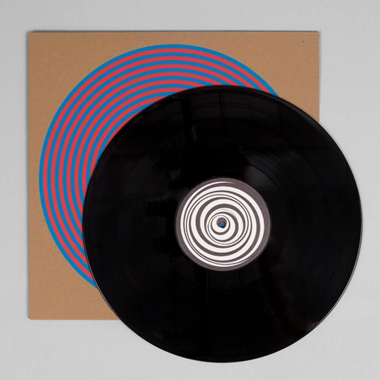
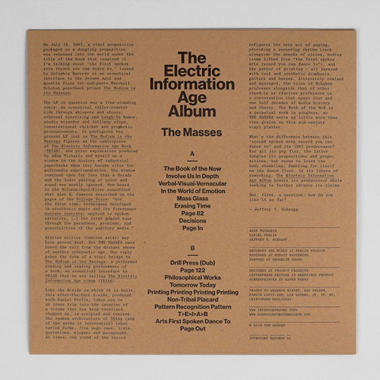

Adam Michaels, Art, Bonati Mastering, Brooklyn Phono, Culture, Daniel Perlin, Distribution, Haven Press, Inventory Books, Inventory Records, Jeffrey T. Schnapp, Marshall McLuhan, Music, Perlin Studios, Project Projects, Recording, Shannon Harvey, Sheffield Product, The Masses

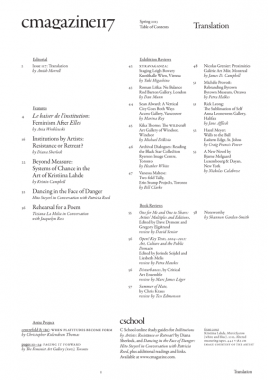
C Magazine 117, Translations
Softcover, 60 pp., offset 4/1, 210 x 295 mm
Edition of 2200
ISSN 1480-5472
Published by C Magazine
$7.50 ·
“Who has time for cynicism? If there is one role model in handling implication it is Jackie Chan…. At moments it’s all flying in his face but look at how he suddenly realigns the whole mess into a landfill art piece.”
— Hito Styerl
Issue 117 includes feature essays by Kristin Campbell, on the work of Kristiina Lahde, Diana Sherlock on the conference “Institutions by Artists,” Ania Wroblewski on the exhibition Feminism after Elles, as well as Patricia Reed in conversation with Hito Steyerl and Jacquelyn Ross in conversation with Tiziana La Melia.
Also, in this issue, reviews from across Canada and around with globe: Sean Alward: A Vertical City Goes Both Ways, Vancouver; Kika Thorne: The wildcraft, Windsor; Vanessa Maltese: Two-fold Tally, Toronto;, Archival Dialogues: Reading the Black Star Collection, Toronto; Michèle Provost: Rebranding Bytown, Ottawa; Nicolas Grenier: Proximities, Montreal; Rick Leong: The Sublimation of Self, Halifax; Hazel Meyer: Walls to the Ball, St. Johns; XTRAVAGANZA: Staging Leigh Bowery, Vienna; Roman Liška: Nu Balance, London; and A New Novel by Bjarne Melgaard, New York. C117 includes book reviews of One for Me and One to Share: Artists’ Multiples and Editions, edited by Dave Dyment and Gregory Elgstrand; Open! Key Texts, 2004–2012: Art, Culture and the Public Domain, edited by Jorinde Seijdel and Liesbeth Melis; Disturbances, by Critical Art Ensemble; and Summer of Hate, by Chris Kraus.
Artist Projects include FAG’s (Feminist Art Gallery) Faging it Forward, and Christopher Kulendran Thomas’ When Platitudes Become Form.
Ania Wroblewski, Archival Dialogues, Art, Bjarne Melgaard, C Magazine, Christopher Kulendran, Critical Art Ensemble, Culture, Dave Dyment, Diana Sherlock, Distribution, Feminist Art Gallery, Gregory Elgstrand, Hazel Meyer, Hito Styerl, Jackie Chan, Jacquelyn Ross, Jorinde Seijdel, Kate Monro, Kika Thorne, Kristiina Lahde, Kristin Campbell, Liesbeth Melis, Michèle Provost, Nicolas Grenier, Patricia Reed, Rick Leong, Roman Liška, Sean Alward, Tiziana La Melia, Vanessa Maltese, XTRAVAGANZA

K8 Hardy, Frank Peter John Dick
Softcover, 52 pp., offset 4/4, 230 x 300 mm
Edition of 500
ISBN 978-0-9822090-2-8
Published by Capricious
$25.00 ·
K8 Hardy’s work riffs on pop culture and all the images we encounter as consumers. The art she exhibits are photographs and sculptures, but part of her process is gathering masses of images from disparate sources and obsessively collaging them together. In a sense, these collages are edits of photos torn from magazines, printed advertisements, and other visual imagery that Hardy finds compelling. Yet they also include her darkroom test strips and snapshots found at the junk store. These collages were never originally intended for exhibition or print, but merely research for the artist’s work. It was only after a few people saw them in her studio that she was encouraged to show them. For this reason, the collages are powerful and weighty; each is it’s own essay. Hardy has made visual examinations that deal with complicated ideas, issues of representation, phenomenon in style, and playful contemplations of fashion.
K8 Hardy (USA, b. 1977) is a New York-based artist who mines popular culture for material and has no regard for originality. She has no allegiance to any particular medium, but performance is a thread that weaves through her body of work. Hardy eschews virtuosity to craft and is currently exploiting photography. She believes in the power of flamboyant and bold gestures, and the conversations of play, which come across in her endeavors toward total expression. The surface is often used as a decoy in her work to address the political conditions of its production. She has recently been working on a series of photographs called the “Position Series” that employ the tropes of self-portraiture and abstract photography. Hardy is a founding member of the queer feminist journal and artist collective, LTTR. She has shown internationally at spaces including: Reena Spaulings Fine Art, NY; The Tate Modern, London; Artist Space, NY: Galerie BaliceHertling, Paris; Galerie Sonja Junkers, Munich; PS1 MOMA, NY; Higher Pictures, NY; Biennial of Photography and Visual Arts, Heerlen, NL; and the Brooklyn Museum, Elizabeth A. Sackler Center for Feminist Art, NY.
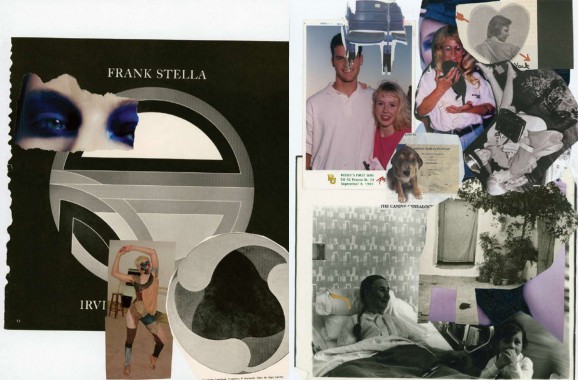



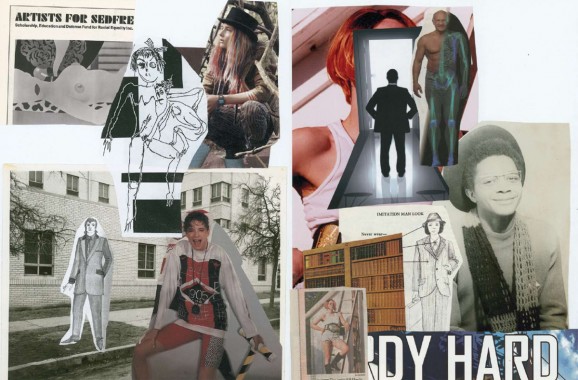
A.K. Burns, Art, Capricious, Collage, Culture, Distribution, Eileen Myles, K8 Hardy, LTTR, Photography, Ulrike Müller

Ed Ruscha — Books & Co.
March 5 — April 27, 2013
Opening: Tuesday, March 5, 6-8pm
Organized by Bob Monk
Gagosian Gallery
980 Madison Ave.
New York, NY 10075
Tuesday-Saturday 10-6pm
New York Times Preview.
Gagosian Gallery is pleased to present an exhibition of Ed Ruscha’s legendary artist books together with books and works of art by more than 100 contemporary artists that respond directly and diversely to Ruscha’s original project. Organized by Bob Monk, “Ed Ruscha Books & Co.” has been drawn from private collections, including Ruscha’s own. Most of the books are installed so that viewers can interact with them and browse their pages.
Inspired by the unassuming books that he found on street stalls during a trip to Europe, in 1962 Ruscha published his first artist book, Twentysix Gasoline Stations under his own imprint, National Excelsior Press. A slim, cheaply produced volume, then priced at $3.50, Twentysix Gasoline Stations did exactly what its title suggests, reproducing twenty-six photographs of gasoline stations next to captions indicating their brand and location. All of the stations were on Route 66, the road mythologized by the eponymous TV series and in John Steinbeck’s The Grapes of Wrath. Ruscha’s book traveled more or less west to east, from the first service station in Los Angeles, where he moved as a young man, back to Oklahoma City, where he grew up.
Initially, the book received a poor reception, rejected by the Library of Congress for its “unorthodox form and supposed lack of information.” However, during the sixties it acquired cult status, and by the eighties it was hailed as one of the first truly modern artist’s books. Ruscha followed up Twentysix Gasoline Stations (1962) with a succession of kindred publications, including Some Los Angeles Apartments (1965), Nine Swimming Pools and a Broken Glass (1968), and Real Estate Opportunities (1970), all of which combined the literalness of early California pop art with a deadpan photographic aesthetic informed by minimalist sequence and seriality.
As the prolific and playful examples in the exhibition attest, Ruscha’s artist books have proved to be deeply influential, beginning with Bruce Nauman’s Burning Small Fires (1968), for which Nauman burned Ruscha’s Various Small Fires and Milk (1964) and photographed the process. More than forty years later, photographer Charles Johnstone relocated Ruscha’s Twentysix Gasoline Stations in Cuba, producing the portfolio Twentysix Havana Gasoline Stations (2008). The most recent homage is One Swimming Pool (2013) by Dutch artist Elisabeth Tonnard, who re-photographed one of the photographs from Ruscha’s Nine Swimming Pools and a Broken Glass (1968) and enlarged it to the size of a small swimming pool, consisting of 3164 pages the same size as the pages in Ruscha’s original book. The pages of this ‘pool on a shelf’ can be detached to create the life-size installation. Between these early and recent examples are a wealth of responses to Ruscha’s ideas by artists from all over the world, gathered here in this celebratory exhibition:
ABC Artists’ Books Cooperative, Noriko Ambe, Edgar Arceneaux, Eric Baskauskas, Luke Batten / Jonathan Sadler (New Catalogue), Erik Benjamins, Victoria Bianchetti, Doro Boehme, Jeff Brouws, Denise Scott Brown, Wendy Burton, Stephen Bush, Corinne Carlson, Dan Colen, Julie Cook, Jennifer Dalton, Bill Daniel, Claudia de la Torre, Joshua Deaner, Jen DeNike, Eric Doeringer, Stan Douglas, Harlan Erskine, Frank Eye, Kota Ezawa, Robbert Flick, Jan Freuchen, Jochen Friedrich, Thomas Galler, Anne-Valérie Gasc, Steve Giasson, Simon Goode, Oliver Griffin, Daniel S. Guy, Dejan Habicht, Marcella Hackbardt, Sebastian Hackenschmidt, Karen Henderson, Mishka Henner, Kai-Olaf Hesse, Taro Hirano, Marla Hlady, Dominik Hruza, Steven Izenour, Sveinn Fannar Jóhannsson, Taly and Russ Johnson, Charles Johnstone, Rinata Kajumova, Henning Kappenberg, Jean Keller, Shohachi Kimura, Julia Kjelgaard, Joachim Koester, Sowon Kwon, Tanja Lažetic, Gabriel Lester, Jonathan Lewis, Jochen Manz, Michael Maranda, Scott McCarney, Mark McEvoy, Jerry McMillan, Daniel Mellis, Martin Möll, Dan Monick, Jonathan Monk, Simon Morris, Audun Mortensen, Brian Murphy, Toby Mussman, Maurizio Nannucci, Bruce Nauman, John O’Brian, Stefan Oláh, Performance Re-Enactment Society, Michalis Pichler, Tadej Pogačar, Susan Porteous, James Prez, Clara Prioux, Robert Pufleb, Joseph Putrock, Jon Rafman, Achim Riechers, David John Russ, Mark Ruwedel, Tom Sachs, Joachim Schmid, Andreas Schmidt, Jean-Frédéric Schnyder, David Schoerner, Yann Sérandour, Travis Shaffer, Gordon Simpson, Paul Soulellis, Tom Sowden, Kim Stringfellow, Derek Stroup, Derek Sullivan, Yoshikazu Suzuki, Chris Svensson, Eric Tabuchi, Elisabeth Tonnard, John Tremblay, Marc Valesella, Wil Van Iersel, Louisa Van Leer, Robert Venturi, Reinhard Voigt, Alex Von Bergen, Emily Wasserman, John Waters, Henry Wessel, Keith Wilson, Charles Woodard, Theo Wujick, Mark Wyse, Hermann Zschiegner.
“Ed Ruscha Books & Co.” will coincide with the publication of MIT Press’s Various Small Books: Referencing Small Books by Ed Ruscha (2013), which documents ninety-one of the books inspired by Ruscha’s own, reproducing covers and sample layouts from each, along with a detailed description. Various Small Books also includes selections from Ruscha’s books and an appendix listing most of the known Ruscha book tributes.
ABC Artists’ Books Cooperative, Achim Riechers, Alex Von Bergen, Andreas Schmidt, Anne-Valérie Gasc, Art, Audun Mortensen, Bill Daniel, Bob Monk, Brian Murphy, Bruce Nauman, Charles Johnstone, Charles Woodard, Chris Svensson, Clara Prioux, Claudia de la Torre, Corinne Carlson, Dan Colen, Dan Monick, Daniel Mellis, Daniel S. Guy, David John Russ, David Schoerner, Dejan Habicht, Denise Scott Brown, Derek Stroup, Derek Sullivan, Dominik Hruza, Doro Boehme, Ed Ruscha, Edgar Arceneaux, Elisabeth Tonnard, Emily Wasserman, Eric Baskauskas, Eric Doeringer, Eric Tabuchi, Erik Benjamins, Frank Eye, Gabriel Lester, Gagosian Gallery, Gordon Simpson, Harlan Erskine, Henning Kappenberg, Henry Wessel, Hermann Zschiegner, James Prez, Jan Freuchen, Jean Keller, Jean-Frédéric Schnyder, Jeff Brouws, Jen DeNike, Jennifer Dalton, Jerry McMillan, Joachim Koester, Joachim Schmid, Jochen Friedrich, Jochen Manz, John O'Brian, John Tremblay, John Waters, Jon Rafman, Jonathan Lewis, Jonathan Monk, Jonathan Sadler, Joseph Putrock, Joshua Deaner, Julia Kjelgaard, Julie Cook, Kai-Olaf Hesse, Karen Henderson, Keith Wilson, Kim Stringfellow, Kota Ezawa, Larry Gagosian, Louisa Van Leer, Luke Batten, Marc Valesella, Marcella Hackbardt, Mark McEvoy, Mark Ruwedel, Mark Wyse, Marla Hlady, Martin Möll, Maurizio Nannucci, Michael Maranda, Michalis Pichler, Mishka Henner, Noriko Ambe, Oliver Griffin, Paul Soulellis, Performance Re-Enactment Society, Reinhard Voigt, Rinata Kajumova, Robbert Flick, Robert Pufleb, Robert Venturi, Scott McCarney, Sebastian Hackenschmidt, Shohachi Kimura, Simon Goode, Simon Morris, Sowon Kwon, Stan Douglas, Stefan Oláh, Stephen Bush, Steve Giasson, Steven Izenour, Susan Porteous, Sveinn Fannar Jóhannsson, Tadej Pogačar, Taly and Russ Johnson, Tanja Lažetic, Taro Hirano, Theo Wujick, Thomas Galler, Toby Mussman, Tom Sachs, Tom Sowden, Travis Shaffer, Victoria Bianchetti, Wendy Burton, Wil Van Iersel, Yann Sérandour, Yoshikazu Suzuki


Juliaan Lampens
Softcover, 152 pp., offset 4/1, 210 x 275 mm
Edition of 2000
ISBN 978-94-6117-005-7
Published by ASA Publishers
$40.00 · out of stock
The architecture of the Belgian Modernist Juliaan Lampens (b. 1926) goes beyond designs for conventional living and instead suggests a utopian avant-garde of living without barriers. He experimented with the use of raw concrete and created sculpture-like exteriors leading onto open vistas. Edited by Angelique Campens. With contributions by Angelique Campens, Sara Noel Costa De Araujo, Joseph Grima, Jan Kempenaers, Hans Ulrich Obrist and Francis Strauven.

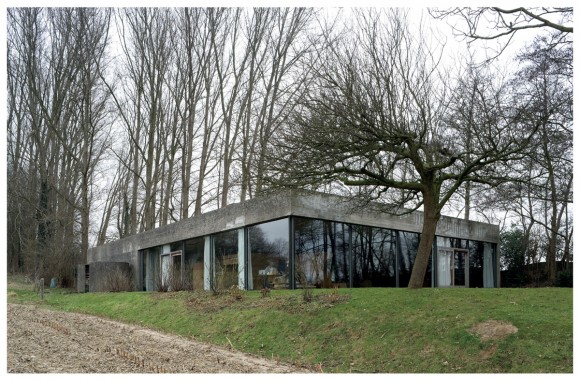
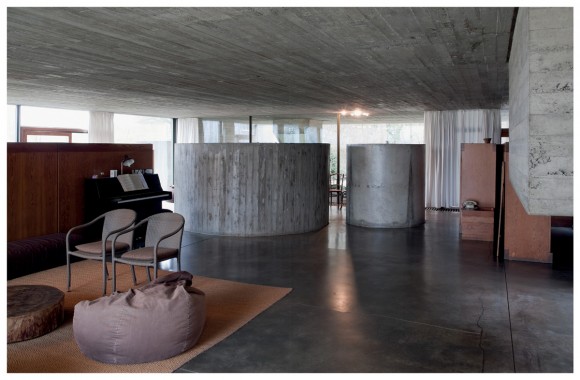
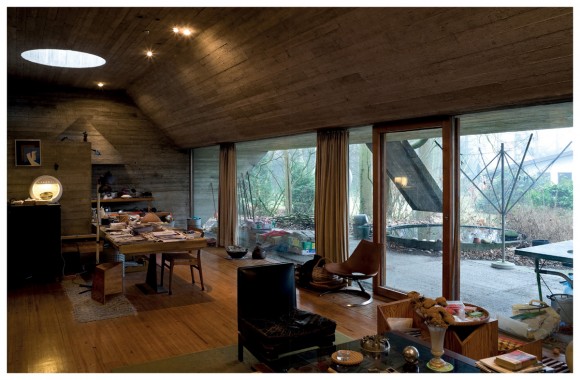

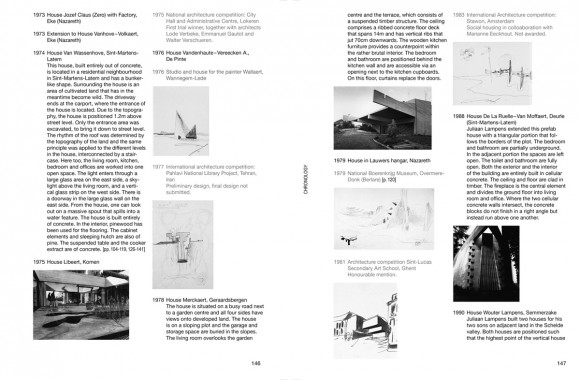
Angelique Campens, Architecture, ASA Publishers, Culture, Distribution, Francis Strauven, Hans Ulrich Obrist, Jan Kempenaars, Joseph Grima, Juliaan Lampens, MER. Paper Kunsthalle, Thomas Desmet


Jef Verheyen, Le Peintre Flamant
Softcover, 256 pp., offset 4/1, 230 x 230 mm
English and German
Edition of 2000
ISBN 978-94-611-7007-1
Published by ASA Publishers
$60.00 ·
Jef Verheyen (1932-1984) is one of the most important Flemish artists of the twentieth century. This book brings together contributions from international authors, exploring for the first time, from a variety of perspectives, Verheyen’s art and his close connections with the avant-garde Group ZERO. A quarter of a century after his untimely death, Verheyen’s abstract paintings are re-examined, interpreted and accorded their place in the history of art. The production of the book has led to the rediscovery of a painter who had fallen into oblivion. Here, unpublished texts and letters and a wealth of photographs bring Verheyen’s creations back to life. Book published on the occasion of ‘Jef Verheyen & Friends,’ at the Langen Foundation in Neuss.
“Jef Verheyen painted an essential distillation of his vision, a perfume of the visible, and his paintings offer their viewers possibilities of seeing something new, remembering things forgotten, and experiencing things they have never experienced before.”
— Dirk Pörschmann
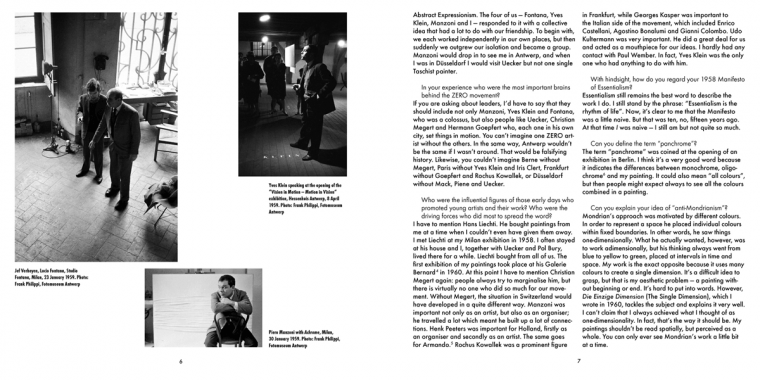





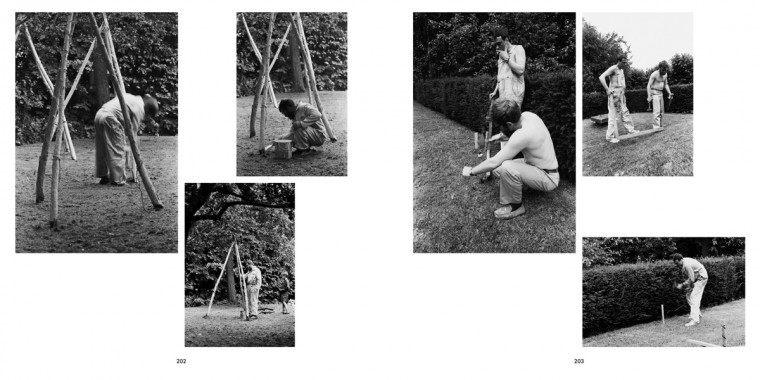
Art, ASA Publishers, Beate Kemfert, Dirk Pörschmann, Distribution, Francesca Pola, Jef Verheyen, Jenny Trautwein, Johan Pas, Langen Foundation, Léonore Verheyen, MER. Paper Kunsthalle, Tijs Visser, Tiziana Caianiello


Benoit Platéus, Parties de voyant
Softcover, 100 pp., offset 4/4, 210 x 280 mm
English and French
Edition of 2000
ISBN 978-94-906-9337-4
Published by MER. Paper Kunsthalle
$28.00 ·
This first work on the Belgian artist Benoit Platéus is a monography as well as an artist’s book. It comprises a selection of works created between 1997 and 2011, as well as a text written by the artist and proposing a direct insight into his universe. Platéus work doesn’t neglect any medium — photography, video, drawing or sculpture — in order to search for ambiguities in the most mundane field of visibility. In this way his art often acts as a ‘psychic apparatus’ that plays on, and questions and reflects the viewer’s perception and consciousness.


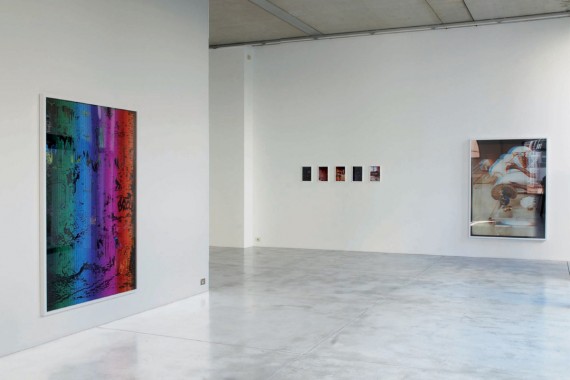

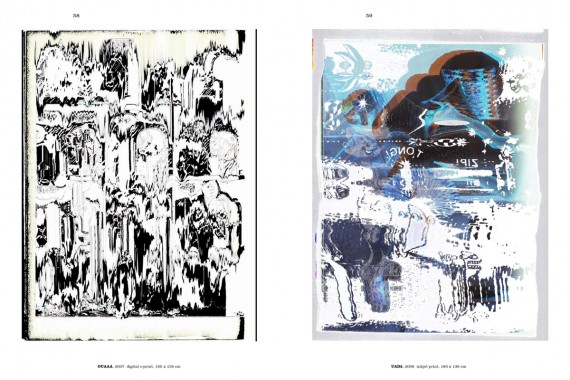

Animation, Art, Benoit Platéus, Distribution, Drawing, Film, James W Haenlin, MER. Paper Kunsthalle, Michelle Van Brussel, Photography, Sculpture
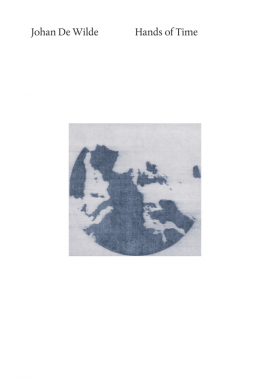

Johan De Wilde, Hands of Time
Softcover, 240 pp., offset 4/4, 210 x 297 mm
English and Dutch
Edition of 2000
ISBN 978-94-906-9339-8
Published by MER. Paper Kunsthalle
$45.00 ·
For many years now, Johan De Wilde’s work has been praised for its meticulous drawing style. The many solemnly applied layers that compose the works also hide in their folds, ever shrinking never to vanish, the Great Irony of our existence and its languages. This first monography presents over 500 drawings, prints and collages from the early nineties to today, concluding with the epic series Hands of Time. The book includes an essay by Hans Theys. A must for those acquainted with De Wilde’s works and a perfect introduction for all others.
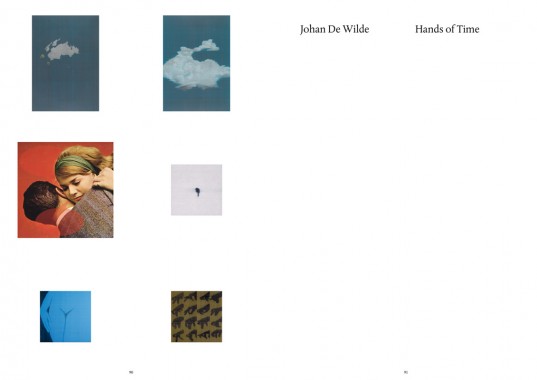




Alison Mouthaan, Art, Dirk Pauwels, Distribution, Drawing, Duncan Brown, Els van de Perre, Hans Theys, Hilde D’haeyere, Jeroen Wille, Johan De Wilde, Luc Derycke, MER. Paper Kunsthalle

Heike Langsdorf, Christophe Meierhans and Christophe Ragg, Epilogue
Postcards from the Future
Softcover, 158 pp., offset 4/1, 170 x 240 mm
Edition of 2000
978-94-9069-355-8
Published by MER. Paper Kunsthalle
$28.00 ·
Epilogue retraces Postcards from the Future’s journey across the nine different city districts in which the project has taken place, each time involving its inhabitants and users in the realisation of a dedicated postcard/performance.
Postcards from the Future has taken place during an entire year, in collaboration with very diverse populations of the city, in places and at moments remote from another. This book takes up the challenge of gathering this multiplicity within a single bundled work, in order to give to all those who have taken part an overview of what the project has accomplished, partcipants in as much as audience members.
The book does not only document how these nine performances appeared in the visual realm of the city. Epilogue develops for each one of them the very thematic which has conditionned the most its realisation. The book portraits nine different interactions with the city, with its different neighborhoods, populations, infrastructures, administration, et al.
Just like any postcards, the Postcards from the Future are linked to the specific place they depict. What makes them special is that each one is associated with a precise point in time located in the future. Rather than being souvenirs, these postcards act primarily as invitations. By accepting the invitation and going to the address on the date and time indicated on a Postcard from the Future, one will be able to verify the prophecy made, thereby not only questioning the determinism, but also the pertinence of the images printed on the paper.

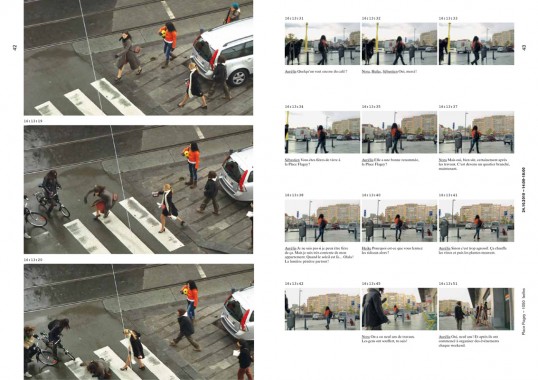



Art, C&H, Christophe Meierhans, Christophe Ragg, Culture, Distribution, Heike Langsdorf, Manuele Dechamps, MER. Paper Kunsthalle, Otamendi, Performance, Sébastien Hendrickx


Hilde D’haeyere, Dislexicon
Hardcover, 64 pp., offset 1/1, 130 x 195 mm
Edition of 2000
ISBN 978-94-906-9331-2
Published by MER. Paper Kunsthalle
$20.00 ·
The ‘Dislexicon of Slapstick Humor, Funny Cinematography, and Very Special Effects’ is a richly illustrated glossary containing 138 witty words used in the Mack Sennett Comedy Studios between 1912 and 1933. It comprises clever concepts connected to slapstick comedy, gag strategies, funny pratfalls, dangerous stuntwork, and secrets of the filmmaking trade. In a mishmash of slapstick facts and fictions, the Dislexicon fully accepts tall tales, technical reports, jokes, and gossip as historical sources. Hopping from “gag” to “laugh” to “trick,” the dictionary presents a slapstick universe in which everything makes perfect sense — as only a fictional construction can.

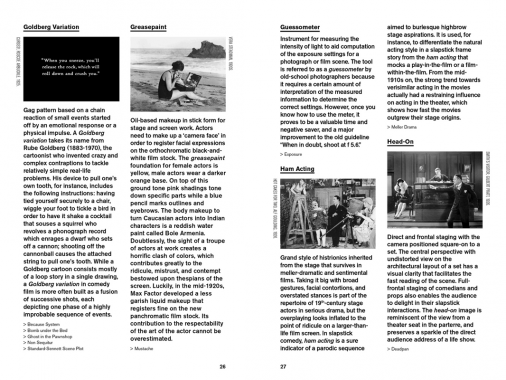
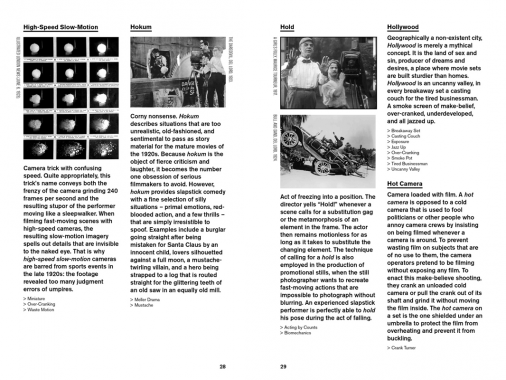
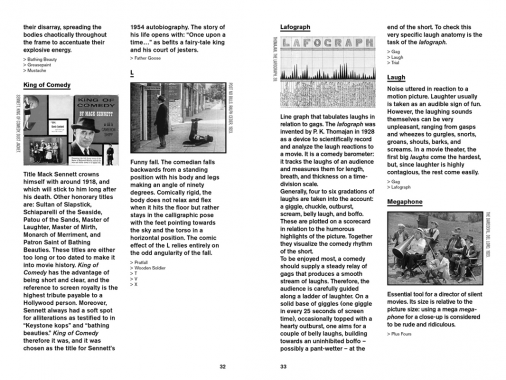
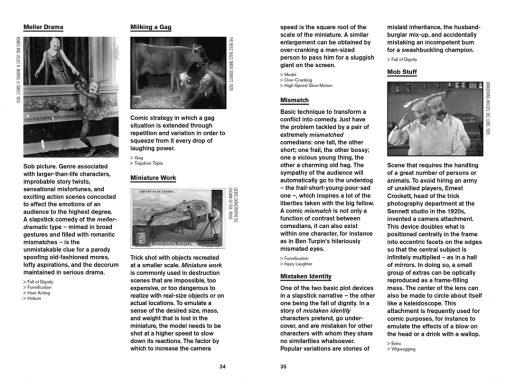
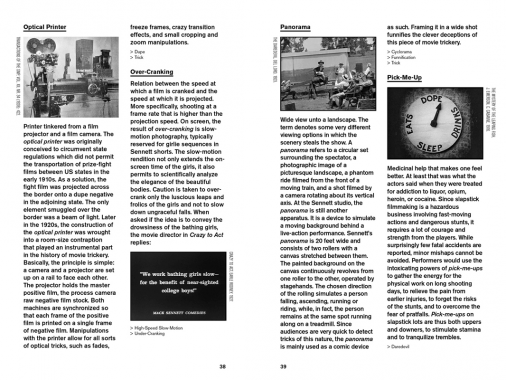
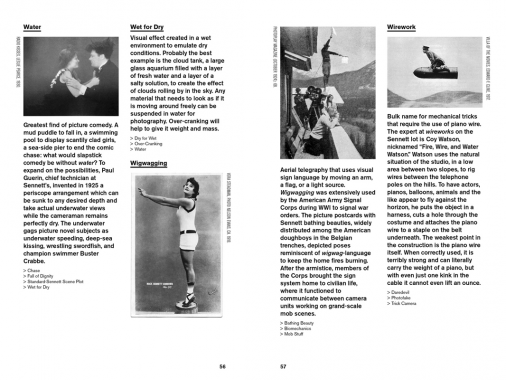
Cinematography, Comedy, Distribution, Film, Hilde D’haeyere, Hollywood, Los Angeles, Mack Sennett, MER. Paper Kunsthalle, Petra Van der Jeught, Photography, Slapstick, Sophie Nys
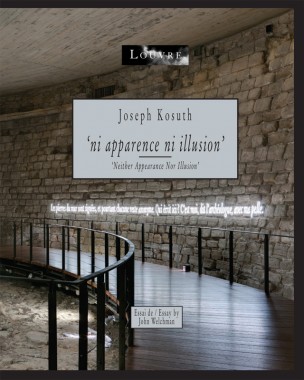
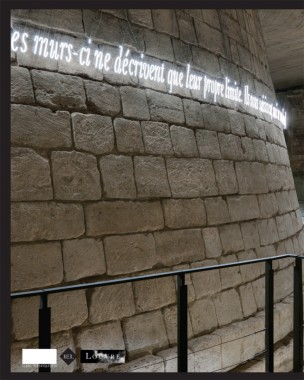
Joseph Kosuth, Neither Appearance Nor Illusion (’ni apparence ni illusion’)
Hardcover, 164 pp., offset 4/4, 260 x 320 mm
English and French
Edition of 5000
ISBN 978-94-906-9303-9
Published by MER. Paper Kunsthalle
$65.00 ·
Published on the occasion of Joseph Kosuth’s installation ‘Neither Appearance Nor Illusion’, an exhibition in the Medieval Louvre. Joseph Kosuth installed on the foundation walls of the original Louvre palace 15 neon text lines he appropriated from an artwork he developed to be read on the Internet, a project for young artists at the Brooklyn Museum. In this context combining a medieval archeological site with a historical art institution the exhibition circuit unfolds the field of potential meanings that always has been the hallmark of Kosuth installations. Entitled ‘Neither Appearance Nor Illusion’ in reference to Nietzsche, it is undoubtedly one of the artist’s most successful and spectacular interventions to date.
Texts by Henri Loyrette, Marie-Laure Bernardac and John Welchman and an interview between Joseph Kosuth and Jacinto Lageira.

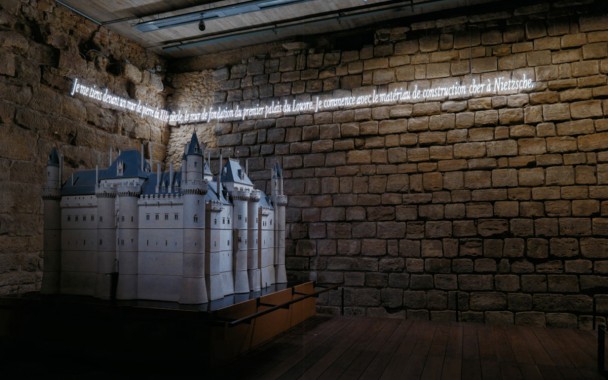
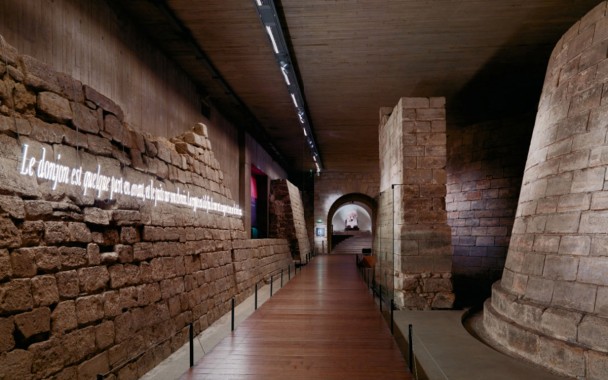
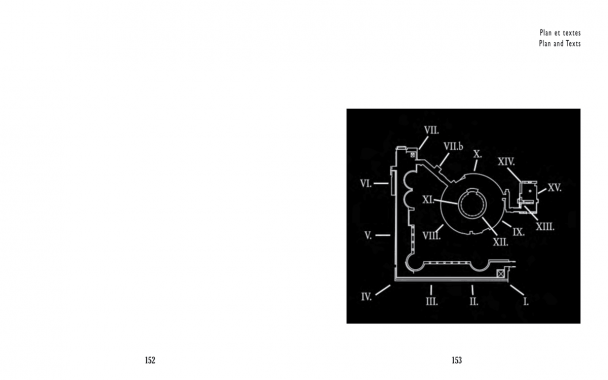


Antiquity, Art, Brooklyn Museum, Distribution, Fiona Biggiero, Florian Kleinefenn, Friedrich Nietzsche, Henri Loyrette, Installation, Jacino Lageira, John Welchman, Joseph Kosuth, Liz Dalton, Luc Derycke, Marie-Laure Bernadac, MER. Paper Kunsthalle, Musee du Louvre, Sculpture


Capricious 13, Water
Softcover, 158 pp., offset 4/4, 210 x 270 mm
Edition of 2000
ISSN 1573-3076
Published by Capricious
$17.00 ·
With the theme of
Water, Capricious delves into one of the most pressing global concerns of the 21st century, finding a dynamic intersection between social consciousness and fine arts photography. Culled from hundreds of submissions, the editorial selection evokes not only the most visually profound forms of water, but documents our shifting relationship with water, whether it be through celebration, or sense of loss.
Capricious 13 moves through sections like Arid, Drift, and Quiet, a fluid visual narrative honoring water. And speaks to our palimpsest-like landscape, where the rise and fall of water lines are marked, and the history of water remains tangible. The work selected explores a myriad of watery dimensions, from the intimate, as water spills into our personal histories, quietly shaping our daily rituals; to global, as water is tamed, an ancient presence spun through industrialization. What ultimately comes to surface is, to what degree water has, in turn, overwhelmed and overcome us.
Also included, is a special chapter of curated texts by Hanna Wilde, including diverse variations on the theme, from poetry to political essay, to stage performance and film excerpt.


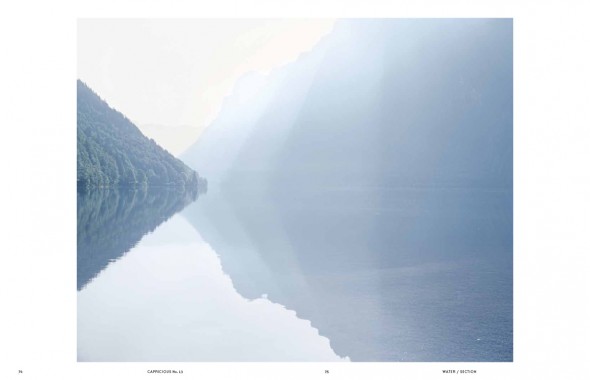

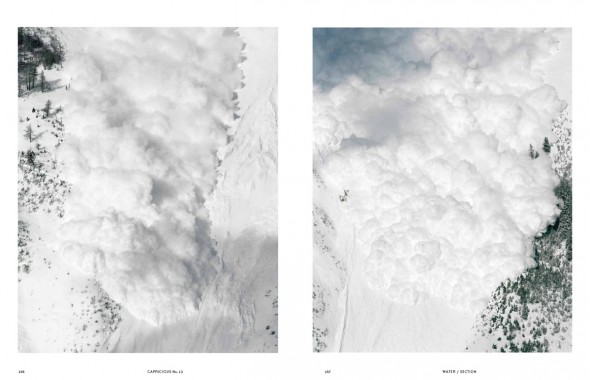
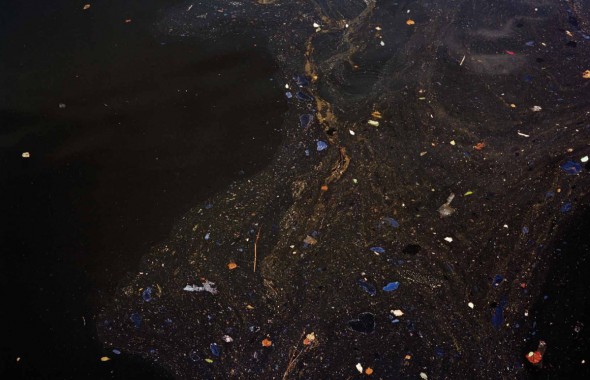
Adi Lavy, Agnes Thor, Allen Chen, Anne de Vries, Anne Hall, Art, Astrida Neimanis, Becca Albee, Bernd & Hilla Becher, Capricious, Celine Clanet, Charlotte de Mezamat, Christopher Borrok, Corrine Fitzpatrick, Culture, D. Bryon Darby, Daniel Beltra, David Benjamin Sherry, Distribution, Eli Leven, Ester Martin Bergsmark, Geert Goiris, Gustav Almestål, Hanna Wilde, Ingela Ihrman, Jacob Ogden, Jeanie Choi, Jeremy Shaw, Joff, Johan Eriksson, Katheryn Love, Kathy Lo, Kaya Yusi, Kim Hoeckele, Kurt Arrigo, Kyle Tryhorn, Laura Plageman, Liana Yang, Lina Manousogiannaki, Linda Hofvander, Lisa Requin, Lotta Andersson, Luiza Sa, Margarita Jimeno, Marie-Jose Jongerius, Mark Terry, Martha Fleming-Ives, Martina Giammaria, Matija Brumen, Michael Marcelle, Michael Werner, Misha de Ridder, Neta Dror, Philip Gaisser, Photography, Rob Bellinger, Ryan McGinley, Sadaf Rassoul Cameron, Sam Irons, Sara Cwynar, Sara Stridsberg, Sarah Soquel Morhaim, Seth Fluker, Simona Belotti, Sofia Hultin, Sophie Mörner, Stefano Graziani, Stepanka Peterka, Tim Trompeter, TONK, Vandana Shiva, Willa Nasatir, Yann Gross




































































